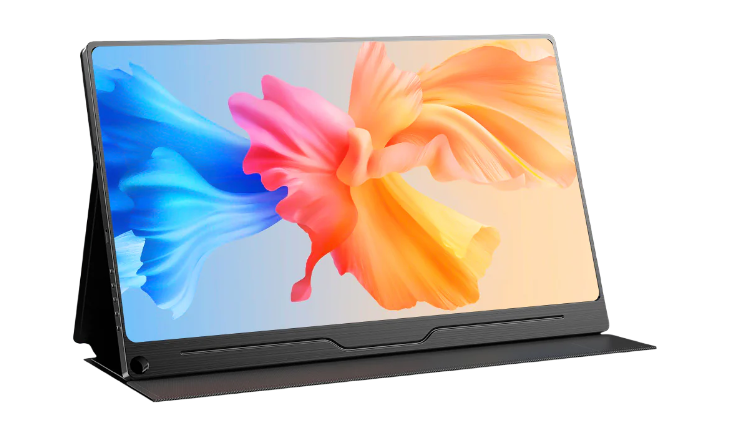Comparing Portable Monitors with Traditional Screens for Versatility

Choosing between portable monitors and traditional screens depends on your work, lifestyle, and performance needs. Portable monitors offer mobility and flexibility, perfect for people who work remotely or travel often. Traditional monitors, however, provide larger screen sizes and higher-end performance for dedicated workstations. Each has its pros and cons, so let’s explore how they compare to help you decide which one fits your needs best.
How Portable Monitors Shine in Flexibility
Portable monitors excel in offering mobility without sacrificing usability. If your job requires moving between locations—whether a coffee shop, co-working space, or meeting room—portable monitors make it easier to stay productive. Their lightweight build allows them to fit into backpacks or laptop bags, making them great for digital nomads, business travelers, and hybrid workers.
Most portable monitors support plug-and-play with USB-C, which means no need for additional cables or complicated setups. A single cable handles both power and data, ensuring your workspace stays organized and clutter-free. Additionally, portable monitors are highly versatile, connecting not only to laptops but also tablets and smartphones. This flexibility enables you to manage documents, presentations, or video calls wherever you go.
Performance and Use Cases of Portable Monitors
While portable monitors can handle everyday tasks, such as email management and spreadsheets, they also cater to entertainment needs. Some models feature high refresh rates, suitable for light gaming and smooth streaming. Though they may not replace a high-end gaming monitor, they provide a good experience for casual gamers. If you’re traveling or staying in temporary accommodations, portable monitors ensure you can enjoy movies or games with better visuals than a phone or tablet screen.
Modern monitors in this category also come with useful features like built-in speakers, touchscreens, and adjustable stands. These additions elevate the user experience, making them ideal for multitasking between work and leisure. However, for those who need advanced color accuracy and higher refresh rates, traditional monitors might be the better choice.
Comparison Table: Portable Monitors vs. Traditional Monitors
| Feature | Portable Monitors | Traditional Monitors |
| Portability | Lightweight and travel-friendly | Stationary and bulky |
| Screen Size | Typically 13 to 22 inches | 24 inches and larger |
| Setup | Plug-and-play with USB-C | Requires external power and HDMI |
| Performance | Great for multitasking and light gaming | Superior for high-end gaming and design work |
| Use Case | Ideal for remote work and travel setups | Best for dedicated workstations |
| Price Range | Generally more affordable | Varies, higher for premium models |
The Limits of Traditional Monitors
While traditional monitors offer larger screens and higher-end performance, they are less convenient for those who need flexibility. These monitors are better suited for stationary setups, such as home offices or gaming stations, where they won’t need to be moved frequently.
Though traditional monitors come with advanced features—such as 4K resolution and higher refresh rates—their bulkiness makes them impractical for on-the-go users. For most everyday tasks like remote work, studying, or travel-friendly gaming, the added power of a traditional screen is often unnecessary.
When to Choose a Portable Monitor
Portable monitors are ideal if you value mobility and multitasking. Whether you’re working remotely, attending meetings in different locations, or traveling, these monitors keep your productivity intact. They also provide seamless integration with laptops, tablets, and smartphones, enabling a smooth transition between work and entertainment.
These monitors shine in hybrid work setups, where you need flexibility to switch between home and office environments. Having a portable monitor allows you to recreate the same dual-screen experience wherever you are, reducing the stress of adjusting to different workstations. Their compact size makes them easy to store and carry, giving you the freedom to work anywhere.
FAQs
- Can portable monitors match the performance of traditional monitors?
Portable monitors are great for multitasking and light gaming but may not match the performance of traditional monitors for intensive tasks. - Are portable monitors compatible with gaming consoles?
Yes, many portable monitors connect to gaming consoles via HDMI, offering a decent experience for casual gaming sessions. - How easy is it to set up a portable monitor?
Setting up a portable monitor is quick and hassle-free with USB-C or HDMI connectivity, making them ideal for people on the move.
How to Maximize Productivity with Portable Monitors
Using a portable monitor offers unique advantages, especially if you’re juggling multiple tasks. They work well in dual-screen setups, allowing you to keep emails or video calls open on one screen while working on the other. Many models also support vertical rotation, which is perfect for tasks like coding or reading long documents.
For business travelers, portable monitors help maintain productivity during downtime. You can set up a temporary workstation in hotels, airports, or even cafes, ensuring you never miss a beat. Students and creatives can also benefit from the extra screen space, whether attending online classes or working on projects.
Final Thoughts
Both portable and traditional monitors serve different purposes, and the choice ultimately depends on your needs. If you’re always on the move and value flexibility, portable monitors are the way to go. They offer a lightweight, easy-to-use solution that enhances productivity and entertainment no matter where you are.
Traditional monitors, on the other hand, are better suited for dedicated workstations that require larger screens and higher performance. If your job demands advanced features or you’re a competitive gamer, a traditional screen will provide the edge you need. Whichever option you choose, both types of monitors offer unique benefits to improve your workflow and entertainment experience.
